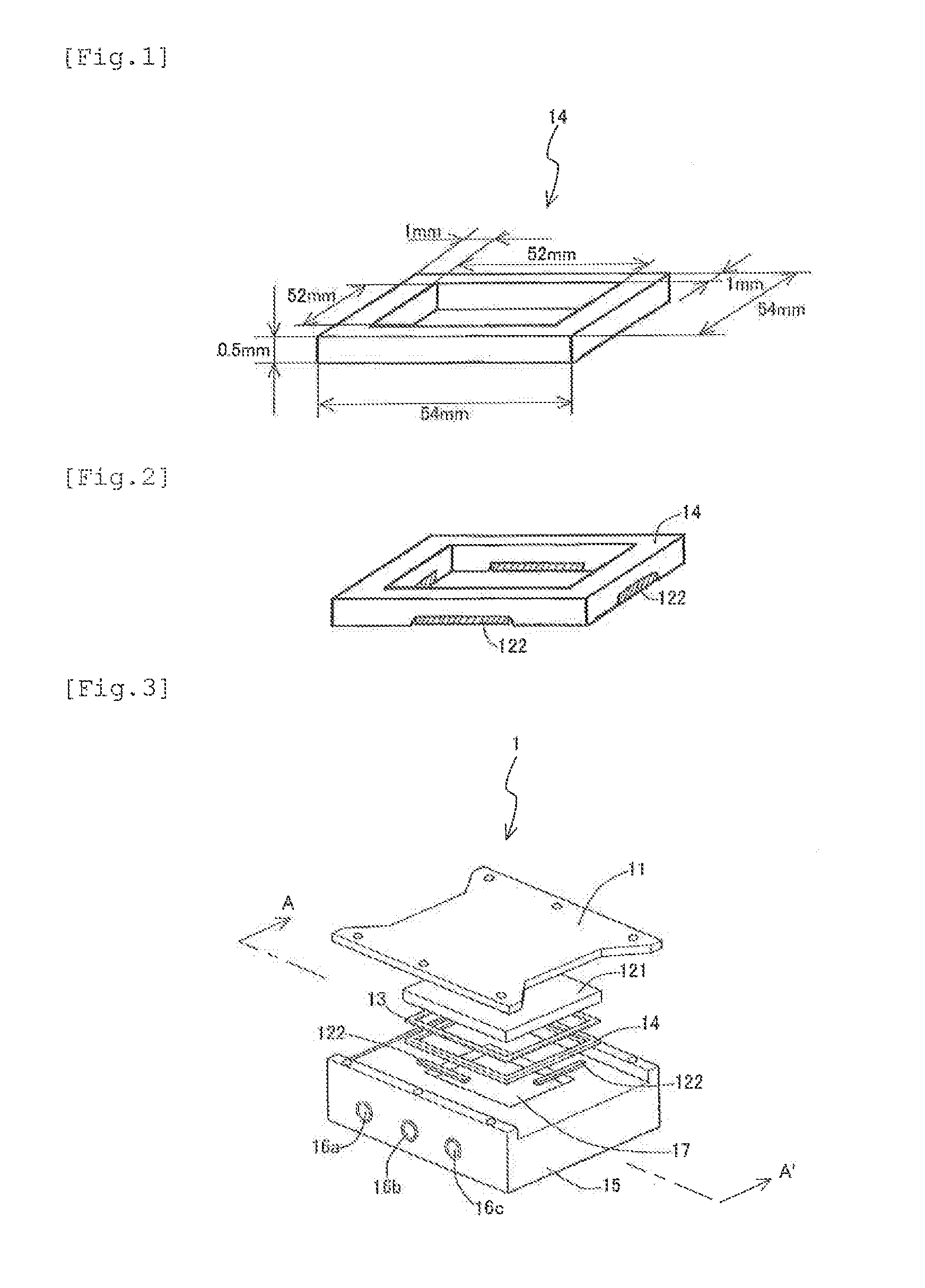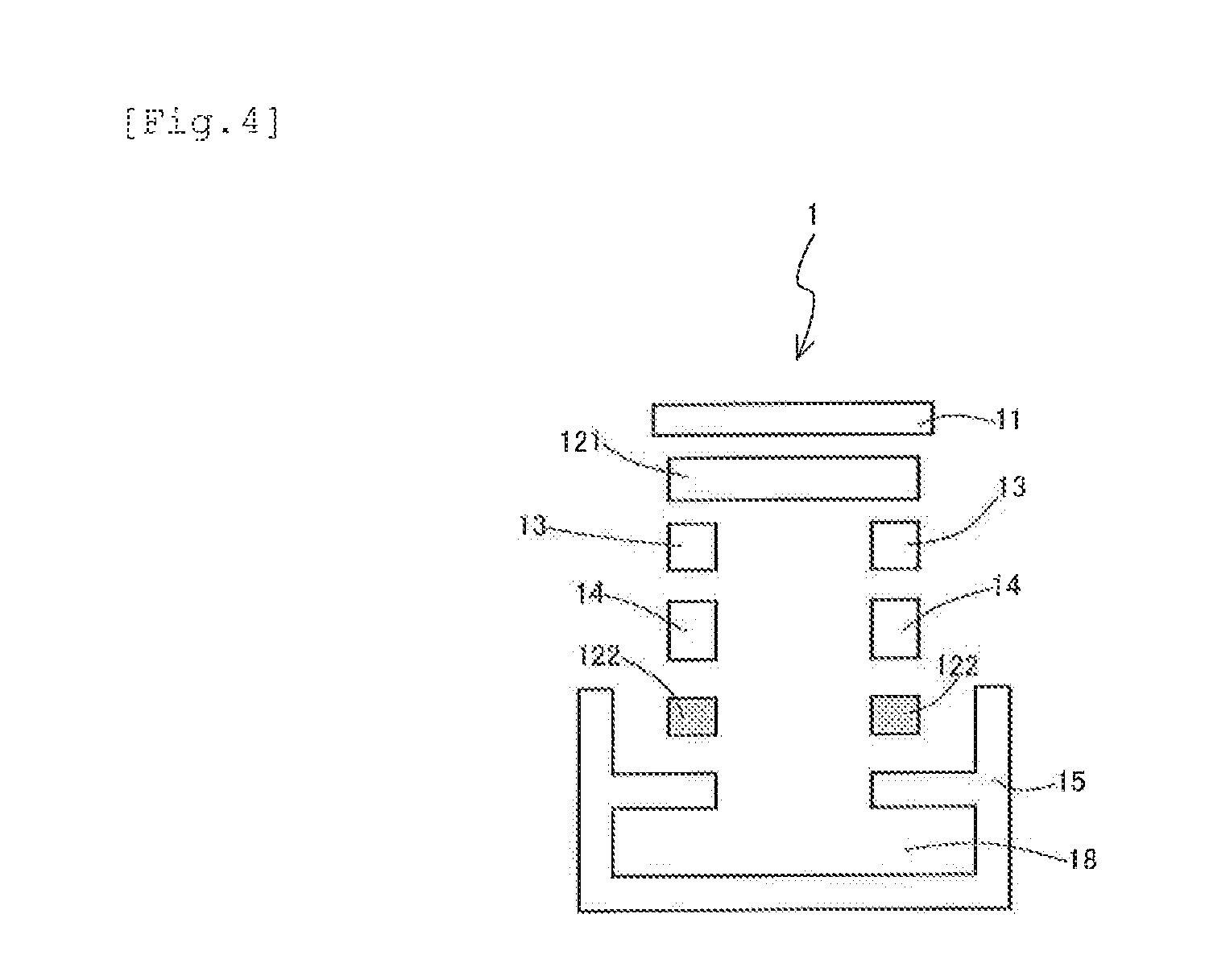Resin foam and foam sealing material
a technology of resin foam and sealing material, which is applied in the direction of film/foil adhesive, transportation and packaging, and other chemical processes, can solve the problems of plastic deformation, insufficient flexibility of above-polyurethane foam, and insufficient step followability or cushioning characteristics, and achieve excellent dustproofness and assemblability
- Summary
- Abstract
- Description
- Claims
- Application Information
AI Technical Summary
Benefits of technology
Problems solved by technology
Method used
Image
Examples
example 1
[0099]In a twin-screw kneader were kneaded, at a temperature of 200° C., 35 parts by weight of polypropylene [melt flow rate (MFR): 0.35 g / 10 min], 60 parts by weight of the thermoplastic elastomer composition A, 5 parts by weight of the lubricant A, and 10 parts by weight of the nucleating agent A. After kneading, the kneaded material was extruded into strands, cooled with water, and cut into pellets, thus obtaining pellets.
[0100]The pellets were charged into a tandem single-screw extruder supplied by Japan Steel Works, Ltd., and 3.8% by weight of carbon dioxide gas relative to the total weight (100% by weight) of the pellets was injected at an atmospheric temperature of 220° C. and at a pressure of 14 MPa, where the pressure became 18 MPa after injection. The pellets were sufficiently saturated with the carbon dioxide gas, cooled to a temperature suitable for foaming, and extruded through a die, yielding a resin foam (in a sheet form).
[0101]Note that the carbon dioxide gas injecte...
example 2
[0102]In a twin-screw kneader were kneaded, at a temperature of 200° C., 35 parts by weight of polypropylene [melt flow rate (MFR): 0.50 g / 10 min], 60 parts by weight of the thermoplastic elastomer composition A, 5 parts by weight of the lubricant A, and 10 parts by weight of the nucleating agent A. After kneading, the kneaded material was extruded into strands, cooled with water, and cut into pellets, thus obtaining pellets.
[0103]The pellets were charged into a tandem single-screw extruder supplied by Japan Steel Works, Ltd., and 4.6% by weight of carbon dioxide gas was injected at an atmospheric temperature of 220° C. and at a pressure of 14 MPa, where the pressure became 18 MPa after injection. The pellets were sufficiently saturated with the carbon dioxide gas, cooled to a temperature suitable for foaming, and extruded through a die, yielding a resin foam (in a sheet form).
[0104]Note that the carbon dioxide gas injected into the tandem single-screw extruder immediately became su...
example 3
[0105]Pellets were produced in the same manner as in Example 1. Next, a resin foam (in a sheet form) was obtained from the pellets in the same manner as in Example 1 except that 4.8% by weight of carbon dioxide gas was injected.
PUM
| Property | Measurement | Unit |
|---|---|---|
| apparent density | aaaaa | aaaaa |
| average cell diameter | aaaaa | aaaaa |
| density | aaaaa | aaaaa |
Abstract
Description
Claims
Application Information
 Login to View More
Login to View More - R&D
- Intellectual Property
- Life Sciences
- Materials
- Tech Scout
- Unparalleled Data Quality
- Higher Quality Content
- 60% Fewer Hallucinations
Browse by: Latest US Patents, China's latest patents, Technical Efficacy Thesaurus, Application Domain, Technology Topic, Popular Technical Reports.
© 2025 PatSnap. All rights reserved.Legal|Privacy policy|Modern Slavery Act Transparency Statement|Sitemap|About US| Contact US: help@patsnap.com


